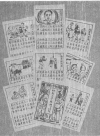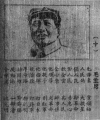Chapter 3: Destroying the Old and Learning from Black Material
Of course the Classical tradition was destroyed by the Cultural Revolution. There was so much criticism. We had never really read the Classics in school. But in order to criticize, you do have to understand the original, and that was wonderful in the early 1970s: there were so many books sold then, and, believe me, I bought a great many: I was really interested. It was great to read all these things, Water Margin [水浒传 Shuihuzhuan] among them. We were so young, and we thought, “There is so much more variety now!” (Museum Curator, 1950s–)
The Classics, sure, I read them a bit at home, never in school, however. Qu Yuan [屈原, 340–278 BCE] I liked, but we did not read a lot of Confucius. During the campaign to criticize Lin Biao and Confucius, we would read a lot of Han Feizi, Legalist thought, that is. I thought that this was quite interesting and fun. I did not really participate in the great criticism activities. In a way, of course, we all took part, but some more, some less. It was not like the early Cultural Revolution, when they had locked me up. Things were much more relaxed than before. So I would begin to read a lot of foreign literature, too, at that time: Alexander Solshenyzin [1918–2008], for example. (Composer, 1937–)
During the “Campaign to Criticize Lin Biao and Confucius,” in short, the Anti-Confucius Campaign, which took place from 1973–75, the Museum of Revolutionary History in Beijing published a “Selection of Three Character Classics for the Peasants, Workers, and Soldiers of the New Democratic Revolutionary Age” (新民主主义革命时期工农兵三字经选 Xin minzhu zhuyi geming shiqi gongnongbing Sanzijing xuan) (XMZZY 1975), which brings together different renditions of the Three Character Classic which appeared between the 1930s and the 1940s. The collection emphasizes in its preface that these “revolutionary” versions of the Three Character Classic are all the result of a struggle against the hateful ideas of the original Three Character Classic (革命三字经就是这种斗争的产物) (Ibid., 4). They are considered renditions of the classic work that, by taking on the very form of the original, are able to fight the ideas contained therein ever more effectively.
By giving a thumbnail history of the uses (and abuses) of the Three Character Classic between the nineteenth and twenty-first centuries, chapter 3 attempts to illustrate the continuous if variable presence of this “traditional” book in the “modern” Chinese educated mind and as part of the “words of the Cultural Revolution.” The chapter intends to show that—just as was the case with opera reform—the Three Character Classic and its form underwent constant reconceptualization that can be traced back to its first appearance in the thirteenth century. This evolution is considered here, through the spectacles of its “modern” reinterpretations, since the late nineteenth century.
Through this process of editing and rewriting, a myriad of countertexts were engendered that not only inscribed themselves in the format of the Three Character Classic but that each talked back to the original by changing or subverting its meaning. These parodies were critical of, and in many cases even negated, the message conveyed in the original, not despite but because of their identical format. Parodies of the Three Character Classic published before and after the Cultural Revolution can thus be read respectively as predecessors and as successors to the radical redefinition in critical editions of the Three Character Classic during the Anti-Confucius Campaign.
The chapter discusses both the intended and the potential effects of these criticisms, as well as the effect of reading the Three Character Classic as black material, on the Chinese public during and after the Cultural Revolution. By stressing the continuities in the use and abuse of the Confucian Classics throughout modern Chinese history, the Three Character Classic being just one example of them, I hope in this chapter to illustrate that once more, in its treatment of the Confucian heritage, too, the Cultural Revolution cannot be considered the great exception but rather follows the rules of modern Chinese cultural history.










